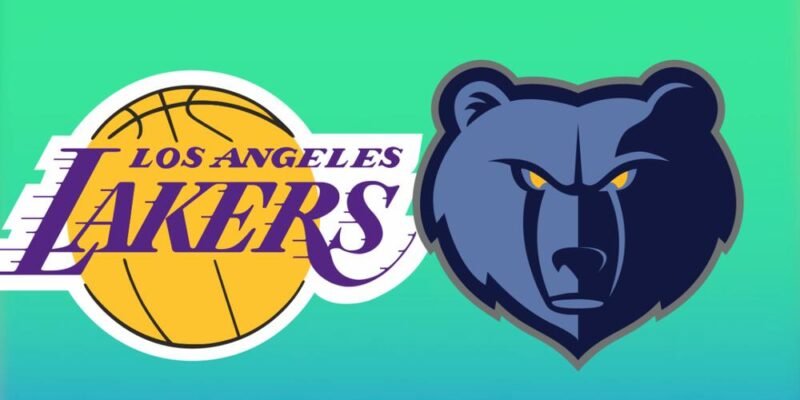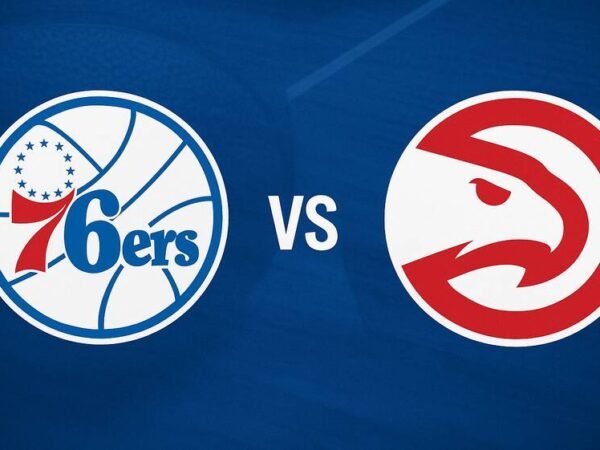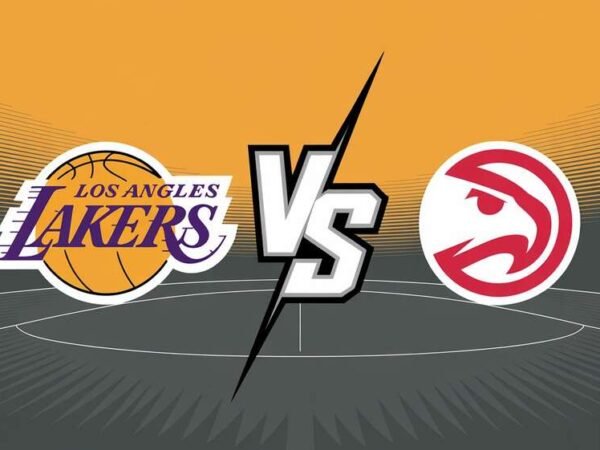The latest matchup between the Los Angeles Lakers and the Memphis Grizzlies was more than just another regular-season game; it showcased talent, strategy, and athleticism. Both teams came into this game with something to prove, and the statistics tell the story of how each player and the team as a whole performed. This article dives deep into the player stats from this matchup, analyzing the performance of key players, team dynamics, and what these numbers mean for both franchises moving forward.
Team Performance Comparison
Team dynamics play a crucial role in any basketball game, and this clash between the Lakers and Grizzlies was no different. The Lakers emerged victorious with a commanding score of 134 to 107, demonstrating their superiority in several key areas.
Scoring Efficiency
The Lakers were notably efficient with their shooting, converting 58% of their field goal attempts. This high percentage reflects their ability to create and capitalize on high-quality shots, whether from mid-range, beyond the arc, or close to the basket. In contrast, the Grizzlies struggled to keep up, managing only a 37% field goal percentage. The disparity in shooting efficiency was a significant factor in the Lakers’ dominant win.
Three-point shooting was another area where the Lakers excelled. They attempted 35 three-pointers and successfully made 22, resulting in a 63% success rate from beyond the arc. The Grizzlies, however, despite trying more three-pointers (53 in total), could only convert 20 of them, ending with a 38% success rate. This difference in three-point shooting efficiency underscores the Lakers’ ability to hit crucial shots when it mattered most.
Rebounding Battle
Rebounding is often the unsung hero of basketball games, and in this match, the Lakers demonstrated their dominance on the boards. They secured a total of 54 rebounds compared to the Grizzlies’ 33. The Lakers were particularly effective on the defensive glass, grabbing 44 rebounds against the Grizzlies’ 20. This disparity limited the Grizzlies’ second-chance points and allowed the Lakers to control the game’s tempo by securing possessions.
Interestingly, while the Lakers led in overall rebounds, the Grizzlies managed to slightly edge them out in offensive rebounds, with 13 to the Lakers’ 10. This statistic highlights the Grizzlies’ effort to stay competitive, particularly on second-chance opportunities. However, their inability to convert these chances into points ultimately hurt their chances of staying in the game.
Turnovers and Impact
Turnovers are another critical aspect of basketball, as they can swing the momentum in favor of the opposition. The Lakers had 19 turnovers compared to the Grizzlies’ 9. Despite this higher turnover rate, the Lakers mitigated the damage through their superior shooting and rebounding. On the other hand, the Grizzlies capitalized on these turnovers to some extent but could not make a significant dent in the scoreline due to their poor shooting performance.
Key Player Contributions
Individual performances often make or break a game; this matchup was no exception. Key players from both teams put in significant effort, with some shining brighter than others.
LeBron James’ Triple-Double Performance
LeBron James, the Lakers’ star player, once again proved why he is considered one of the greatest basketball players ever. He recorded a triple-double, showcasing his versatility and ability to impact the game in multiple ways. James scored 28 points, grabbed ten rebounds, and dished out 11 assists. His ability to control the game as a scorer and a playmaker was instrumental in the Lakers’ victory. James’ leadership on the court was evident as he consistently made the right decisions, whether finding an open teammate or taking the shot himself.
Anthony Davis’ Dominance in the Paint
Anthony Davis, another key player for the Lakers, was a force to be reckoned with in the paint. He scored 25 points and pulled down 12 rebounds, including five on the offensive glass. Davis’ presence in the paint was a constant challenge for the Grizzlies’ defense, as he scored efficiently and drew multiple defenders, creating opportunities for his teammates. His ability to protect the rim was also on full display, as he recorded four blocks, further solidifying the Lakers’ defensive efforts.
Notable Contributions from the Grizzlies
Despite the loss, the Memphis Grizzlies had some standout performances. Ja Morant, the Grizzlies’ young star, scored 27 points and added six assists. Morant’s explosiveness and ability to penetrate the Lakers’ defense were evident throughout the game. However, his efforts were insufficient to overcome the Lakers’ balanced attack. Desmond Bane also contributed 22 points, showcasing his shooting ability from beyond the arc. Bane’s 3-point shooting kept the Grizzlies within striking distance, but like Morant, his contributions were ultimately overshadowed by the Lakers’ superior team play.
Statistical Highlights
While the individual performances were noteworthy, the overall statistics from the game provide a deeper understanding of how the Lakers secured such a convincing win.
Shooting Percentages
As mentioned earlier, the Lakers’ shooting efficiency was a significant factor in their victory. Their 58% field goal percentage and 63% three-point shooting were significantly higher than the Grizzlies’ 37% field goal and 38% three-point percentages. This disparity highlights the Lakers’ ability to consistently create and make high-quality shots, which is crucial in a high-stakes game.
Points in the Paint and Fast-Break Points
The Lakers also dominated in the paint, scoring 40 points compared to the Grizzlies’ 34. This advantage in the paint was mainly due to the efforts of players like Anthony Davis, who controlled the interior on both ends of the court. The Lakers’ ability to score inside and practical outside shooting made them a problematic defending team.
Fast-break points were another area where the Lakers excelled, outscoring the Grizzlies 17 to 8. The Lakers’ ability to quickly transition from defense to offense allowed them to capitalize on the Grizzlies’ mistakes and extend their lead. This aspect of the game was crucial in maintaining momentum and preventing the Grizzlies from mounting a comeback.
Free Throw Efficiency Comparison
Free throws are often overlooked but can be the difference in close games. In this matchup, the Lakers shot 75% from the free-throw line, making 18 of their 24 attempts. On the other hand, the Grizzlies struggled from the line, making only 9 of their 12 attempts for a 75% success rate. While both teams shot the same percentage, the Lakers’ ability to get to the line more frequently and convert their chances contributed to their overall scoring advantage.
Impact of the Match on Standings
This game had significant implications for both teams in terms of playoff positioning. For the Lakers, the victory solidified their place in the upper echelon of the Western Conference standings. Their strong performance against a team like the Grizzlies sends a message to the rest of the league that they are a serious contender for the championship.
The Grizzlies’ loss highlighted some of their weaknesses, particularly in shooting efficiency and rebounding. While they remain a competitive team in the Western Conference, this game showed that they need to improve in these areas to make a deep playoff run.
Upcoming Challenges for Both Teams
Looking ahead, both teams face challenges as they prepare for the remainder of the season. The Lakers must maintain their high level of play and avoid injuries, which have plagued them in recent seasons. Their depth and versatility will be tested as they face more formidable opponents in the coming weeks.
On the other hand, the Grizzlies need to address their shooting woes and find ways to improve their rebounding. While they have a talented roster led by Ja Morant, they will need more consistent contributions from their supporting cast if they hope to compete with the top teams in the league.
Conclusion
The Lakers vs. Memphis Grizzlies matchup was a compelling basketball display, with the Lakers emerging as the clear victors. The Lakers’ superior shooting, rebounding, and overall team play defined the game. Critical performances from LeBron James and Anthony Davis highlighted their ability to dominate in multiple aspects of the game, while the Grizzlies’ brave efforts fell short.
As the season progresses, both teams must learn from this game. The Lakers must continue to build on their success, while the Grizzlies need to address their weaknesses. This matchup was more than just a regular-season game; it was a glimpse into the potential future of these two teams as they continue their pursuit of NBA glory.












